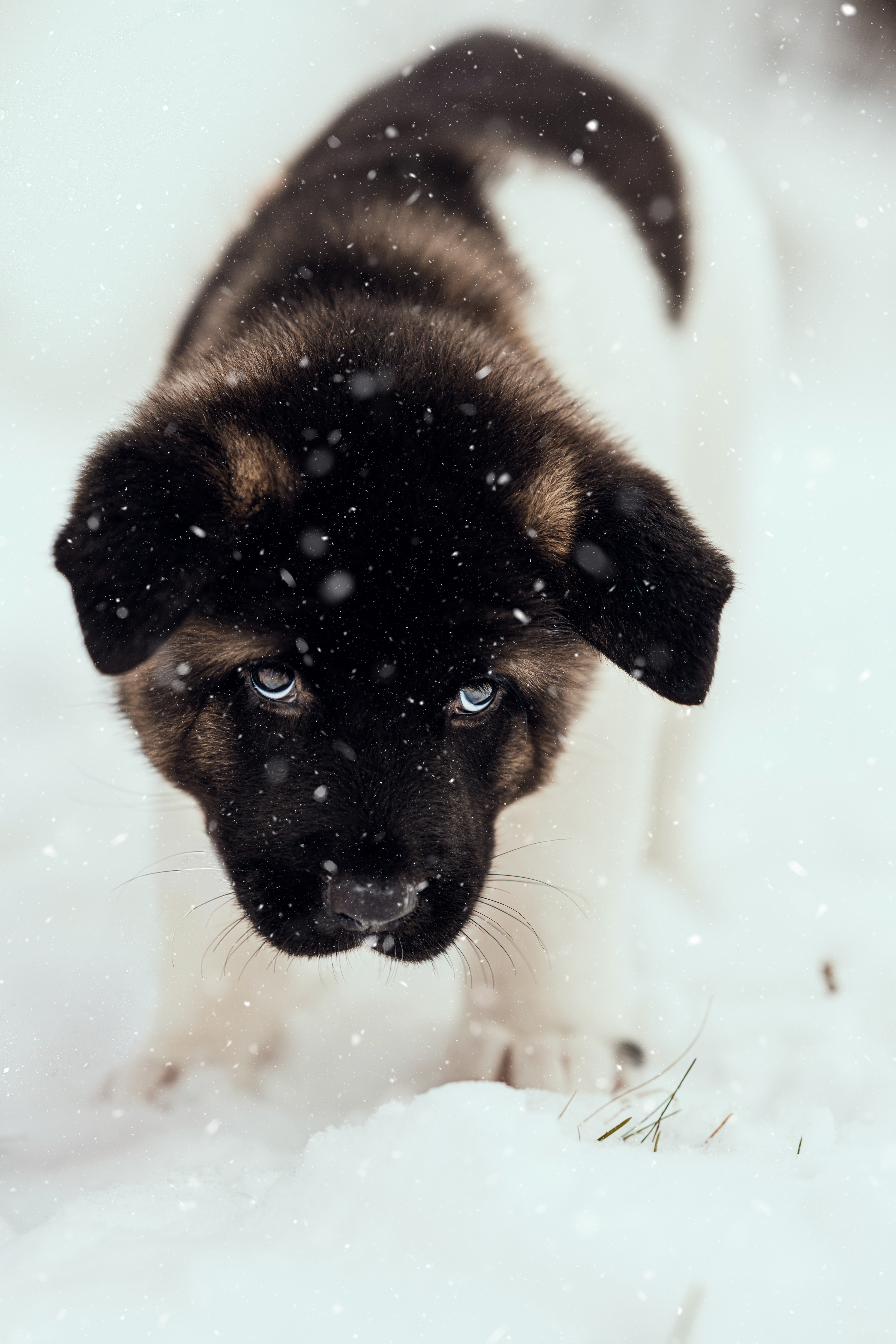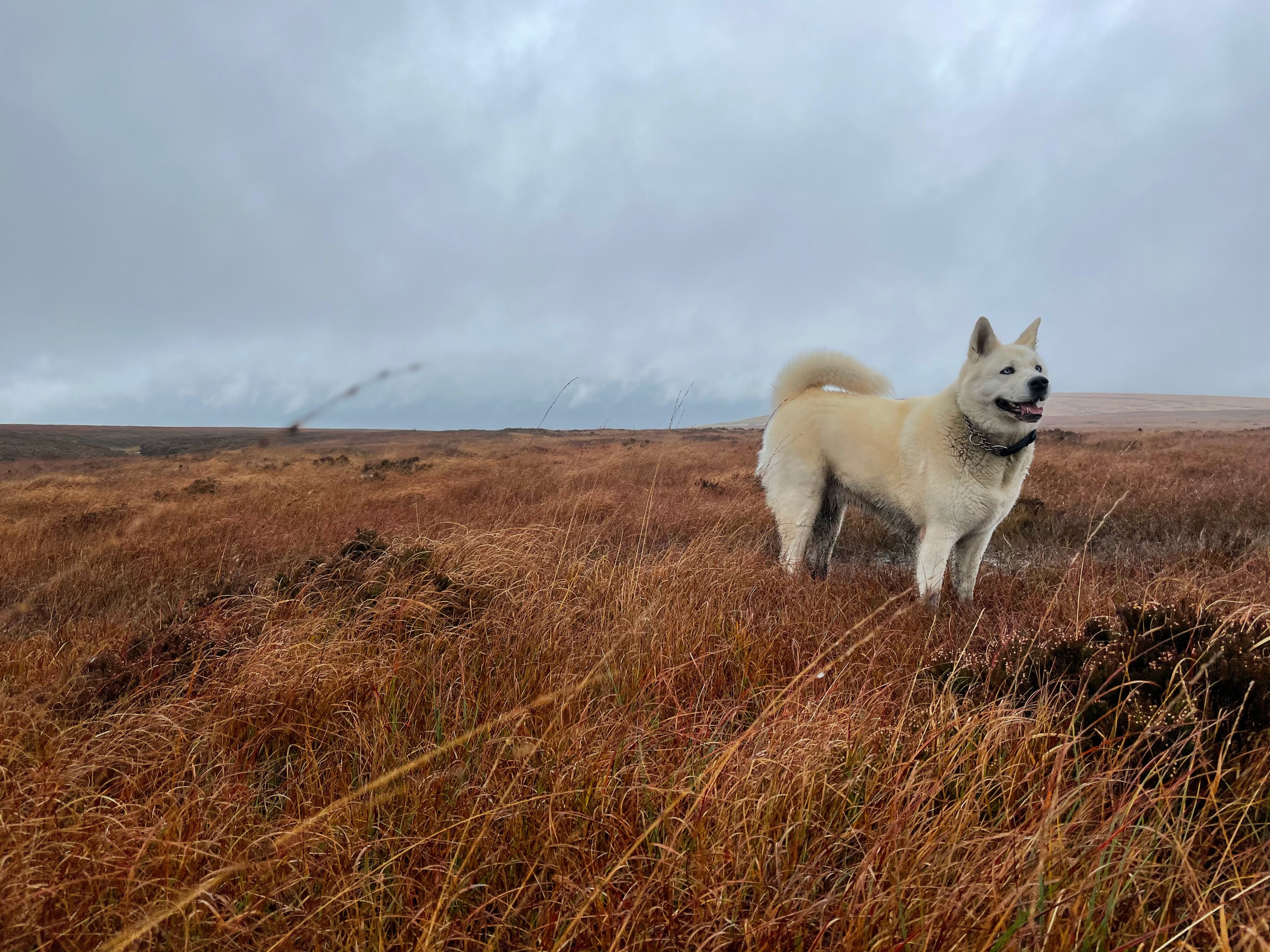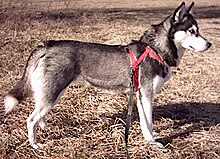
The Akita is a powerful, dignified breed originating from the mountainous regions of northern Japan. Known for their loyalty and boldness, Akitas have served various roles throughout history, from imperial guardians to hunting companions and symbols of good health, happiness, and longevity. Their thick double coat, which can range in colors from white to brindle, equips them for cold climates, while their alert expression and deep-set eyes convey both intelligence and introspection. As revered as they are in their homeland, the Akita has also gained international admiration for its noble demeanor and unwavering loyalty to family.
The Akita is a member of the AKC Working Group.
Breed Characteristics
| Dog Breed | Akita |
| Breed Popularity (AKC) | 55 |
| Country of Origin | Japan |
| Personality | Loyal, intelligent, good-natured, energetic |
| Life Expectancy | 10-13 yrs |
| Height | 24-28 in |
| Weight | 70-130 lbs |
| Color | Red, Fawn, Sesame |
| Coat | Double coat |
| Shedding | Seasonal |
| Grooming | Daily Brushing |
| Health Problems | Dental problems, eye issues, skin allergies |
| Trainability | Eager to Please |
| Exercise Needs | Energetic |
Akita History
The Akita breed has its origins in the mountainous regions of northern Japan. There are two distinct types: the Japanese Akita Inu and the American Akita. Initially bred for hunting large game, such as bears, their roles shifted over time to being imperial guards and symbols of good health, happiness, and long life. The story of Hachiko, an Akita known for his remarkable loyalty, further cemented the breed’s esteemed position in Japanese culture.
Temperament
Akitas are dignified and courageous, exhibiting a profound loyalty to their families. While they’re intelligent, their independent nature can challenge training sessions. Their behavior leans towards being reserved, especially with strangers. They have a moderate to high energy level and require consistent exercise. Early socialization is crucial, especially given their protective instincts. Their barking tendencies are moderate, often used as an alert, and they are notably reserved in unfamiliar situations.
Remember, while breed traits provide a general idea, individual dogs can have personalities that differ from the breed standard. Always spend time getting to know the dog and ensure their needs and temperament align with your lifestyle.
Grooming Requirements
Akitas have a dense double coat that requires regular brushing, more so during shedding seasons, to remove dead fur. Bathing should be occasional, but when done, a dog shampoo suitable for double-coated breeds is recommended. Regular grooming tasks such as nail trimming, ear cleaning, and dental care are important for this breed.
Akita Health
Akitas live approximately 10-15 years. Regular health checks, vaccination, deworming, and flea prevention are essential. They might face health issues like hip dysplasia and certain immune system disorders. Their diet should be rich in nutrition, incorporating quality dog food and treats. Neutering or spaying is considered beneficial.
Exercise Needs
Akitas are powerful and dignified. Regular walks and structured play sessions cater to their exercise needs. They might appreciate dog park trips for socialization, but their reserved nature means monitoring is essential. Bonding through structured activities and playtime is beneficial for this breed.
Training
Akitas, celebrated for their loyalty and dignity, require firm obedience training. With precise commands, potty training is manageable, and crate training serves as their personal space. Given their protective nature, addressing behavior problems early is essential to prevent unwanted aggression. Thorough socialization, especially during their formative months, ensures they’re well-adjusted and trustworthy.
Akita Pictures



Related Dog Breeds
More Dog Resources
Are you thinking about getting a puppy? Make sure to check out our list of important questions to ask before you adopt a puppy.
We also have many resources to help, from naming your puppy to socialization resources and training tips.
Take me back to the Ultimate Guide to Dog Breeds



